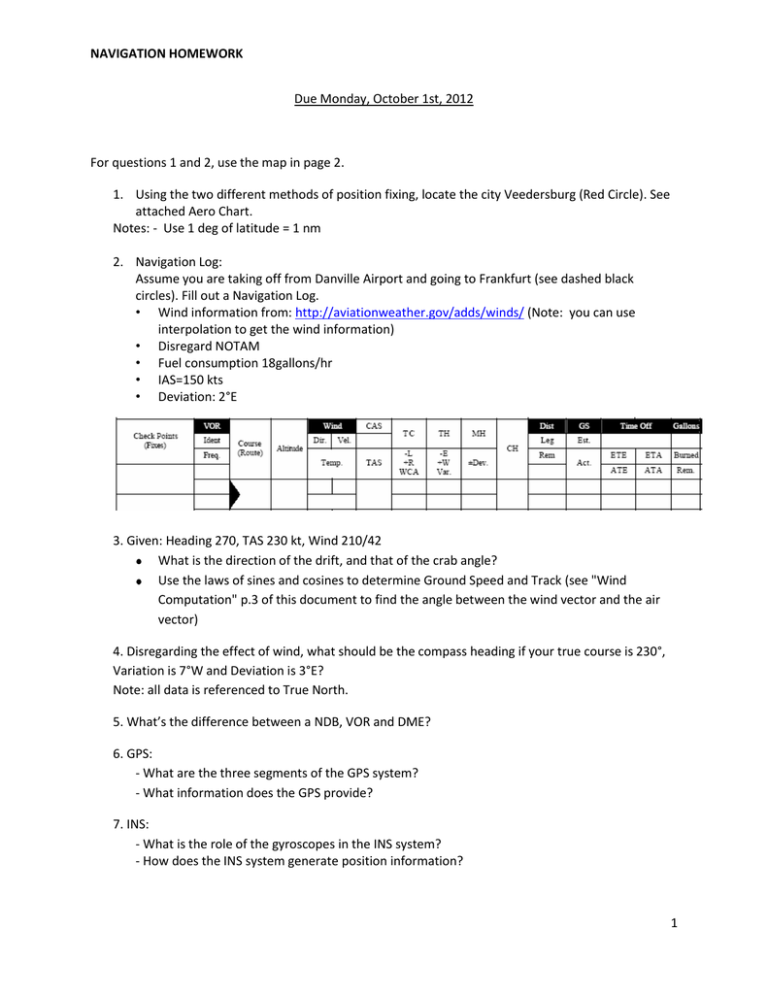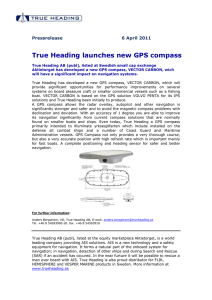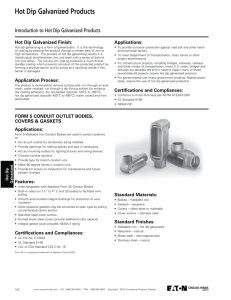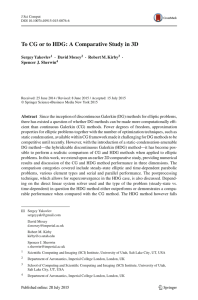NAVIGATION HOMEWORK Due Monday, October 1st, 2012
advertisement

NAVIGATION HOMEWORK Due Monday, October 1st, 2012 For questions 1 and 2, use the map in page 2. 1. Using the two different methods of position fixing, locate the city Veedersburg (Red Circle). See attached Aero Chart. Notes: - Use 1 deg of latitude = 1 nm 2. Navigation Log: Assume you are taking off from Danville Airport and going to Frankfurt (see dashed black circles). Fill out a Navigation Log. • Wind information from: http://aviationweather.gov/adds/winds/ (Note: you can use interpolation to get the wind information) • Disregard NOTAM • Fuel consumption 18gallons/hr • IAS=150 kts • Deviation: 2°E 3. Given: Heading 270, TAS 230 kt, Wind 210/42 What is the direction of the drift, and that of the crab angle? Use the laws of sines and cosines to determine Ground Speed and Track (see "Wind Computation" p.3 of this document to find the angle between the wind vector and the air vector) 4. Disregarding the effect of wind, what should be the compass heading if your true course is 230°, Variation is 7°W and Deviation is 3°E? Note: all data is referenced to True North. 5. What’s the difference between a NDB, VOR and DME? 6. GPS: - What are the three segments of the GPS system? - What information does the GPS provide? 7. INS: - What is the role of the gyroscopes in the INS system? - How does the INS system generate position information? 1 NAVIGATION HOMEWORK 2 NAVIGATION HOMEWORK Computing Wind Angle To get the wind angle between the Air Vector (Heading/TAS) and the Wind Vector (Direction/Wind Strength): if Generally, you can use the compass rose as follows to double check your work: 1- visualize the aircraft's heading in the compass rose 2- visualize the wind direction in the compass rose (remember: unlike the aircraft heading, the wind direction is telling us where the wind is coming from) 3- find the acute angle between your aircraft's longitudinal axis and the wind direction: Here are a few examples for a heading of 040° and different wind settings: HDG 040 Wind: 000 HDG 040 Wind: 280 = 40° HDG 040 Wind: 070 = 30° 240>180 =240-180=60° Note: there is a tailwind component Note: there is a headwind component Note: there is a headwind component =40° =30° =60° Use the graduations of the compass rose to figure out the angle between the wind and the aircraft. 3









